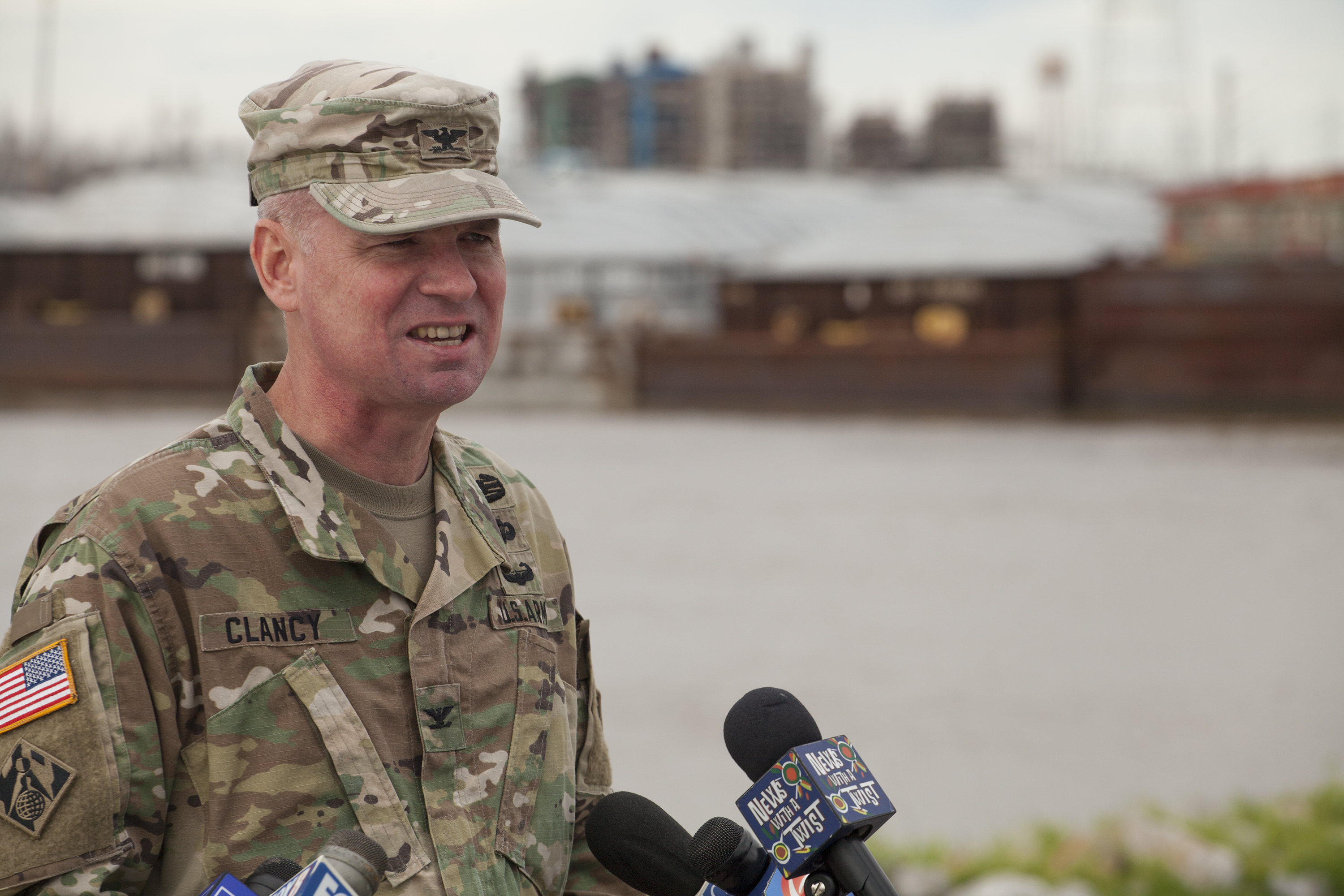The Huey P. Long Bridge in New Orleans, La., was closed for several hours February 27 after it was struck by the crude oil tanker ship Clio, which was northbound. According to reports, a light atop the ship’s skeleton tower dragged the underside of the bridge as it passed underneath. The bridge was closed to vehicular traffic for several hours while the U.S. Coast Guard and local authorities checked for damage.
The allision, likely an air draft issue due to the high river, is just the latest incident to occur during the months-long flood fight on the Lower Mississippi River.
Capt. Kristi Luttrell, captain of the Port of New Orleans and commander of Coast Guard Sector New Orleans, speaking February 28 at the World Trade & Transport Conference in New Orleans, discussed the flood fight on the Lower Mississippi River, which is already some 120 days in length. High water in New Orleans is considered 8 feet at the Carrollton Gage and above.
“We’d love for that river to drop, but it doesn’t look like anytime soon it’s going to go down with spring rainfall just around the corner,” Luttrell said. “Because of that, yesterday the Army Corps of Engineers opened the Bonnet Carré Spillway.”
During a press conference February 25, Col. Michael Clancy, commander of the New Orleans Engineer District, announced the decision to open the spillway on February 27.
The Corps opened 28 of the 350 bays at the Bonnet Carré Spillway February 27, marking the first time in the structure’s history that it’s been opened in consecutive years. The Corps anticipates operating the spillway for about a month. During operating, the ship anchorage adjacent to the spillway is closed. In addition, an assist boat, the mv. Tenner C, will be stationed on site to offer aid as vessels pass the structure.
During her presentation at the conference, which is organized by the Mississippi Valley Trade & Transport Council, Luttrell addressed directly the increased number of vessel incidents during high water periods.
“We do get more collisions, allisions and groundings during high water—a lot more than when the water is below 8 feet at the Carrollton Gage,” Luttrell said.
So far in South Louisiana, the current high water period has not seen the dramatic vessel and personnel casualties seen a year ago, thanks in large part to the readiness and rapid responses of vessel crews when allisions, collisions and breakaways have occurred.
The high water, however, has had far-reaching effects on navigation, both for inland vessels and oceangoing ships in the river.
Near the mouth of the river, high water and fog have proved a combined cause of draft restrictions. Fog in particular has had a twofold detrimental impact on navigation. At times this year, fog has brought ship traffic to a complete stop. That impacts ships of all kinds, including dredges, said Sean Duffy, executive director of the Big River Coalition, who also spoke at the World Trade & Transport Conference.
“Getting the dredges here has been a challenge this year,” he said.
Capt. Michael Miller, president of the Associated Branch Pilots who guide ships between the Gulf of Mexico and Head of Passes, said the fog also kept Corps surveyors from monitoring the channel.
“What happens in the fog is, when we don’t get surveys for four or five days, we’re not sure what the depth is,” Miller said.
Miller said that, in turn, causes the pilots’ associations to restrict the draft through Southwest Pass. As of February 28, the draft at Southwest Pass was at 44 feet. The authorized depth there is 45 feet. The draft restriction at Southwest Pass reached 41 feet in early February due to lack of surveys.
So far, the Port Allen Lock, along with the Algiers, Inner Harbor Navigation Canal and Harvey locks, remain open to navigation. The Inner Harbor Navigation Canal Lock, which had been closed to navigation due to valve repairs, is now open.
The Coast Guard has imposed horsepower and tow restrictions in Baton Rouge and New Orleans on the Mississippi River and in Morgan City along the Atchafalaya River. Details are available on the U.S. Coast Guard’s HomePort webpage.




